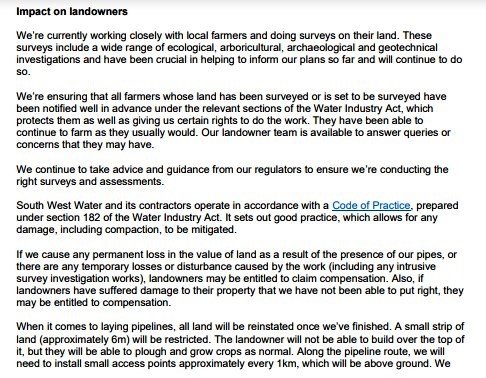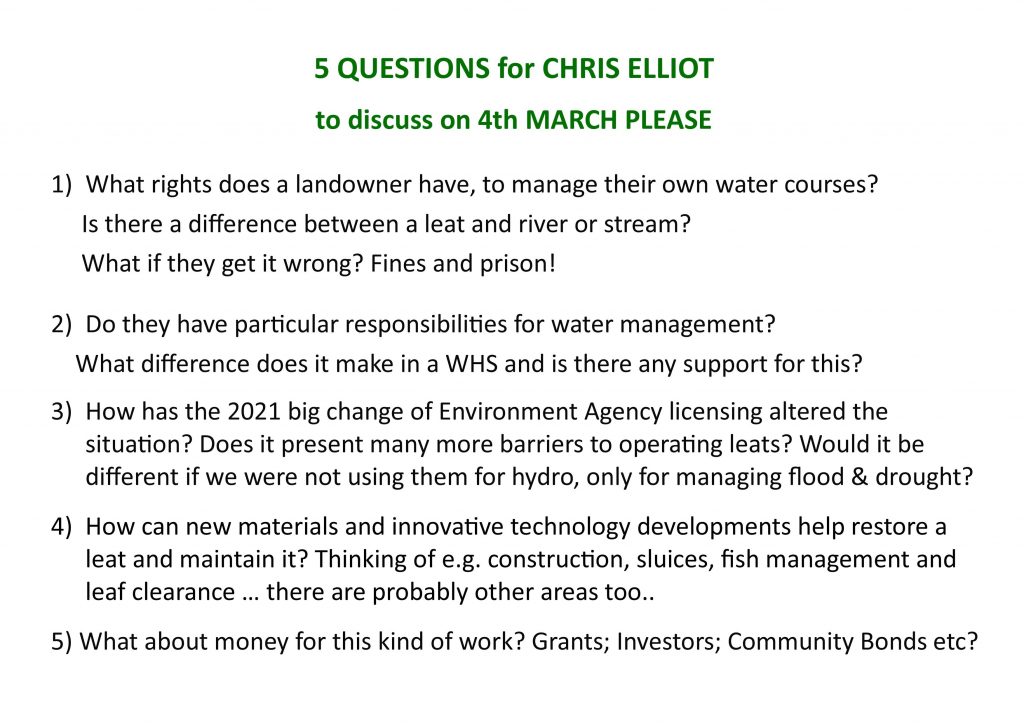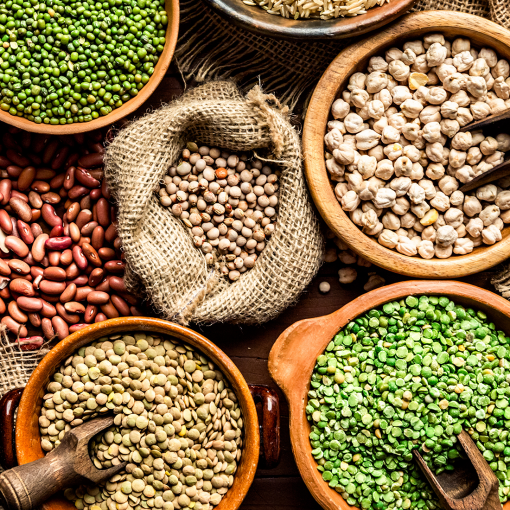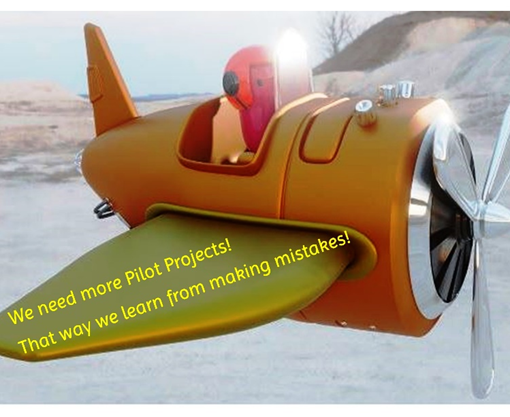1st March
From a mad man, walking down the Amazon, to my own madness – most of the stories that follow are about Peru and the Inca Sunshine project + Ceremony that we are dreaming up for May and June. More immediate and nearer home there is a Seagrass and SW Water update.
At last, we make it to the Leap Day, end of February and embark on March, which is the official meteorological start of spring. Try saying that word, what a mouthful! The saying goes that March comes in like a lion and out like a lamb, well overnight there was definitely a Lion – a storm with high, high winds and lots of hail. Seems a little calmer now and the fields are full of lambs! So, I went out to get some pictures for you, and found it was freezing out there. At least the rain, which had a grim impact on the lambing, finally lifted and I got a rainbow!


My publication this time is going to be late, for sure. I only just got started writing and it is already Friday lunchtime! My timings are always dictated by when good or bad news lands, either via the radio, TV, newspaper or email In-box. There hasn’t been much from the media this week, but just yesterday I had quite a pile of important stuff by email. One was the deadline for another of those Climate Awards (took ages to sort it out) but the rest of the messages were dealing with the next BIG ONE we are cooking up, so I really wanted time to include these items about Inti Raymi:-

The true Inti Raymi Festival in South America will take place on Monday 24th June, but for obvious practical reasons we have decided to schedule our own version the day before. As you see, this is a rough draft image because it is such early days in hunting for partners and places. We will need a venue like Pydar was in Truro, huge undercover and linked with an outdoor area, to make the kind of impact we want for the Ceremony. It doesn’t need to be posh, so I am veering towards a big sports hall, opening out onto a south facing playing field. And I have this vision of creating a set, using huge straw or sileage bales, in order to represent the power of Inca construction.

Ollantaytambo is a town and an Inca archaeological site in southern Peru some 60 kms northwest of the city of Cusco.
It is located at an altitude of 2,792 meters (9,160 feet) above sea level in the district of Ollantaytambo, province of Urubamba, Cusco region.
During the Inca Empire, it was the royal estate of Emperor Pachacuti, who conquered the region, built the town and a ceremonial centre. At the time of the Spanish conquest of Peru it served as a stronghold for Manco Inca Yupanqui, leader of the Inca resistance.
I started out hoping one of the well-known amphi-theatres, like Eden or Sterts, might be able to take it. But for various reasons they cannot. Eden is helping with some of the research and – even better news – Sterts people are interested in collaborations for the future … so that’s good! 😊
If you have any inspirations for locations please do send across your ideas, not only for the Ceremony but also beforehand, during the May Half Term when we are looking for places that might like to host 3 very different workshop days, with 2 or 3 sessions in each: –
Saturday 25th May = Make your own poncho and head-dress and learn to dance in them
Sunday 26th May = Explore food of the Andes, cook, serve and sing some songs
Bank Holiday 27th May = Watch films, create poems and pledges, rehearse the procession and dances. There will be 2 halves, stimulated by 2 different films – the 1st from the extraordinary adventure DVD, ‘Walking the Amazon’ and the 2nd sharing the work of Acción Andina and the Global Forest Generation.
WHO IS HELPING SO FAR?
You may hate this, but Amazon the company has got me started on learning about Amazon the region. They sold me the book and DVD of Ed Stafford and his totally mad walk of over 860 miles, beside or often up to his neck within the Amazon.
I have almost finished reading the book, but not seen all of the film yet. Without doubt this gives me some reliable, recent info on the most serious challenges for the region, such as growing and trafficking of cocaine, increasing drought, all types of damage of the forest for mining and inappropriate agriculture and numerous threats to the Inca’s lifestyle.
Let me just share a few snippets of one topic (in a slight precis version), which hopefully – if Ed and the publisher permit – will go into our Family Worksheets: –
‘At Satipo I saw a map that indicated how a whopping 100% of the Peruvian Amazon (excepting the few protected areas) is now allocated for resources extraction of some kind’. The government has sold the drilling rights from beneath the feet of the Ashaninka people, starting just 5m below the surface, and the indigenous people have no say at all.’


‘Propaganda was being pumped into the people by President Garcia, constantly telling everyone that ‘Peru Advances’ with shiny, happy people extracting oil and other natural resources. It made me sick to realise that the Ashaninkas have no part in this prosperous future’.


PS please note 2 things i) No spitting in our cookery sessions! And ii) Ed has mis-spelled this Yucca. With 2 Cs in it = the house plant we are all familiar with. Here it should have only one C =Yuca, which is the Cassava plant, highly versatile for producing many food items from its root. Look out for some Yuca recipes coming soon!
‘We approached the mining area from the south. It was an amazing sight, an open-cast bauxite mine that was removing the rainforest completely, in huge areas for digging out the aluminium bauxite in vast quantities. There were enormous industrial conveyor belts … ‘
I know there is much more to discover about this. The company is Brazilian and has operated in the Amazon forest for about 45 years. They claim to be socially and environmentally responsible, so that surely will require further research! https://mrn.com.br/index.php/en/who-we-are
Here is the summary provided in Researchgate, to accompany the pictures above:-
An aerial view of the open-cut bauxite mine at Trombetas in central Amazoni, that is located in a relatively undisturbed area of evergreen equatorial moist forest. A re-forestation program treats about 100 ha of mined land per year by using stockpiled topsoil and by planting a variety of native species with direct seeding, stumped saplings, or potted seedlings. (B) Within 10 years of establishment, most sites have many more tree and shrub species than the number initially planted because of seed stored in the topsoil or colonization from the surrounding forest. These new species would have been brought to the site by birds, bats, and terrestrial mammals, and most were species with small seeds. Overall, it seems the re-forestation program has been successful in facilitating the reestablishment of both plants and animals to the site, although more time will be needed for the composition and structure to closely resemble nearby intact forest (SOM Text).
These links with mining communities are clearly of huge interest to Cornish readers, with the many parallels we have. I look forward to sharing more stories, soon.
Inti Raymi 1944
My next source is face to face, in Cornwall, meeting up with one of our Blog readers, ‘Bella, a lovely local lady who showed me books and photos of her ancestors, who were medical missionaries in the Andes. Twenty years ago, she organised her own pilgrimage to Machu Picchu and the city of Cusco, where the Inti Raymi Ceremony was re-instated in 1944. I will be meeting Bella and exchanging more stories and photos soon, but for now here is an introduction:-
Before this time, the last Inti Raymi with the Inca Emperor’s presence was carried out in 1535. After that the Spanish colonists and their Catholic priests banned the ceremony and other Inca religious practices. In 1944 a historical reconstruction of the Inti Raymi was directed by Faustino Espinoza Navarro and indigenous actors and this has continued until today’s enormous celebration involving well over 3,000 people.



Before I leave this, let me share the 3rd and 4th contacts, just made. I have written to quite a list of possible helpers, with the question ‘can you put me in touch with a musician or dancer from Peru?’
Just yesterday I was delighted to start exchanges with an Earthshot Prize winning team, represented by Abby, who wrote,
I am so glad for your interest in Acción Andina and Global Forest Generation. It is truly inspiring work, involving many thousands of community members across the Andes reforesting the hills by planting millions of trees.
To answer your questions:
–Funding:( I asked how the prize money will be used) I will confirm this with our development team, but much of our funding directly supports conservation and restoration. More on this soon.
–Who to feature:(I asked who to feature in the Blog, would it be Accion or Global Forest?) I would focus on Acción Andina, as it is leading our on-the-ground efforts. You could mention Global Forest Generation as a co-founder and strategic partner of AA.
–Musicians and dancers: Let me ask around and see what I can do. Are you wanting to have a Zoom call with them to learn the music and dance steps?
–Sharing with Earthshot: Once things are firmed up, I will reach out. Thanks again for sharing more about your inspiring project. Abby
The Accion Andina Director is an Inca man, who is passionate and inspirational. I will be sharing some of his uplifting messages, in print, pictures and film, next time.
Now to a US based operation – Covering Climate Now Awards

I mentioned this in the introduction, another Award scheme for which entries close on Friday 1st, at midnight US Eastern Time. At the very last moment I entered this very blog. I am sure nobody will take an interest, as there are so many categories and open to the very best journalists all round the world. But still, you never know. I am sharing in case you are a writer and want to enter in future and because I think the categories are interesting in themselves.
Can you guess which one I selected for us to enter? In due course I will let you who is chosen anyway.
01. Solutions
Science is unequivocal that solutions are urgently needed to confront the climate crisis — and audiences are hungry to learn about them. Great journalism doesn’t just explain potential solutions, it interrogates them: Do they achieve what they promise, do they measure up to what science demands, and are they just? While solutions are mentioned in many climate stories, winning work in this category will feature one or more solutions as its primary subject.
02. Justice
Climate change often hits first and hardest marginalized countries and communities which have contributed the least to the problem. While justice is mentioned in many climate stories, winning work in this category will feature a justice angle — among others, peril and hope on the frontlines of the climate crisis, unexpected intersections of climate change with other systems of injustice, and the marginalized groups pioneering solutions to show the world a path forward — as its primary subject.
03. Fossil fuels
Journalism investigating the power and machinations of the fossil fuel industry remains as critical as ever. Winning work in this category might cover new fossil fuel development, greenwashing, government lobbying, dubious schemes to offset emissions, and disinformation, among other industry-related subjects.
04. Extreme weather and its impacts
This category will reward stories that make clear the connection between weather disasters and human-caused climate change. Strong explanations of how climate factors into extreme weather — hurricanes, floods, wildfires, and extreme heat and cold, and more — as well as human-centered stories of disasters and their aftermath told with a climate lens, can help inform the public about the bigger picture.
05. Politics, policy, and climate action
This category is for work that covers government action and inaction; policies that hold promise and ones that don’t promise enough; and the leaders who’ve fought to deliver solutions, as well as those who’ve thwarted them. Also pertinent to this category: elections, the global democracy crisis, and the roles of diverse government agencies.
06. Activism & movements
Activists are newsmakers, as much as the politicians and corporate leaders that journalists tend to cover more often. This category is for work on every facet of climate activism and movements, from well-known groups and individuals to small, local groups and leaders making change in their communities. We’re looking for coverage that engages with the substance and efficacy of activists’ agendas, examining people power in all its complexity.
07. Business & economics
In the race towards a clean energy economy, what businesses are thriving and faltering? What policies and banks are helping spur the transition, and who’s doubling down on fossil fuels? And critically, amid such rapid change, who’s gaining work and who’s losing it? This category is for all things related to business and economics, from the financial burden of climate disasters to the opportunities of climate action.
08. Global negotiations, including COP28
Fodder for this category might include the ongoing debate over “loss and damage” (what wealthy countries owe developing ones bearing the brunt of the climate crisis), the role in the climate fight of various international bodies, like the G7, ASEAN, and the African Union, and how climate factors in relations between countries like the US and China. How is climate change pushing countries apart or bringing them closer together? And what stands in the way of countries making good on global climate commitments?
09. Conflict & climate change
From Gaza to Russia’s war in Ukraine, conflict dominated headlines in 2023. Thoughtful journalism helped audiences explore the climate implications of these and other conflicts — current and past. This category will award work that shines a light on the intersections of climate change and violent conflict, including militaries’ carbon footprints, wartime damage to ecosystems, and the potential of climate change to fuel future confict by driving instability.
10. Displacement & migration
As the climate emergency intensifies, harrowing flights for safety and shelter are increasingly common, especially in the regions most vulnerable to climate impacts. This category is for work that thoughtfully examines internal displacement and cross-border migration driven or made more likely by climate change, as well as government efforts to cope. Work might also explore the intersection of climate change with the complex web of other factors that prompt displacement, including poverty, violence, resource scarcity, and more.
11. Forests, oceans, and the natural world
The natural world is fundamental to the world’s climate future. From whole ecosystems — at-risk forests, warming seas, melting ice, and more — to crises facing individual plant and animal species, this category is for work that explores nature’s many roles in the climate story, as well as threats to and efforts to protect it.
12. Health
The health implications of climate change and extreme weather — including their effects on mental health — are staggering. In this category, we’re looking for work that sits at this critical intersection. What health conditions have been made worse by climate change? Who is affected uniquely or disproportionately? And are healthcare systems adapting to meet new challenges?
13. Food & agriculture
Climate change is taking a harsh toll on the world’s food systems. And across the world, communities are changing their food production and consumption habits — think: regenerative agriculture, meat alternatives, and the tried-and-tested agricultural practices of Indigenous peoples — to both reduce their carbon output and improve their health and quality of life. This category is for work on those subjects and more, from Big Ag to small meals whipped up at home.
14. Climate in every beat
Given the enormity of the climate crisis, there are intersections with virtually every subject journalists cover. This category is for work that creatively connects climate change to subjects less commonly associated with it: sports, arts, culture, gender, and education, to name just a few examples. If you’re looking at the other awards categories and don’t see any other place for your work, this might be the category for you.
15. Emerging journalists of the year
This award will go to early-career journalists — meaning five or fewer years of professional journalism experience — or students, whose work on climate change shows exceptional promise. A nominee may self-submit or be submitted by an editor, supervisor, instructor, or other professional colleague. For this entry, you’ll be asked to provide five stories — including articles, visuals, broadcast segments, and/or major media appearances — that are demonstrative of the nominee’s work; at least three of these must be from 2023.
16. Large projects & collaborations
Big stories call for ambitious and innovative coverage. This category is for work that constituted a major, dedicated undertaking for the newsroom(s) and journalist(s) involved — work executed at a scale well beyond the one or several stories that we’re considering in other categories. Examples of such coverage might include but are not limited to:
- A newsroom published a series of stories that explored an important facet of the climate story from many angles.
- Multiple journalists or newsrooms, including ones that might be competitors, collaborated to report on an issue of common concern.
- A newsroom launched a series of community outreach events to help educate audiences on one or several aspects of the climate crisis.
PLEASE NOTE: Although we’re looking for big approaches to the climate story, we’re mindful that journalists work in different environments, with different resources. Entrants in this category don’t need to come from large, well-resourced organizations to be competitive; we’re just as interested in seeing work from small newsrooms, or groups of journalists, who pushed limited resources to the max.
BACK to the UK, for some broadcasts ..
ECOSEND PODCAST
I had totally forgotten but back before Christmas I took part in a recorded interview with our bulk email providers, EcoSend. They have just written this in an email, which is exciting! What I love is the fact I was able to bring my Mum and son, Tom, into this..
Clearly my reason for sharing with you is primarily to support EcoSend and thank them for helping me. Even if you personally cannot stomach more content about Meadow Barns, it would be great to know you would share the link to others. And of course you might also enjoy meeting others in their podcasts, by viewing or listening to more of the series of talks. (REMINDER TO SELF – watch some and report back!).
Dear Caroline
Thank you so much for appearing as a guest on The EcoSend Podcast – we absolutely loved recording this episode with you. We’re excited to let you know the episode went live today!
We’ve shared it across our socials, so please then feel free to share as well. If you could please subscribe/follow yourself, and then remember to tag us in any shared posts, that would be brilliant. Here’s a couple of links for you:
YouTube: https://youtu.be/0H2f0ybPx20
Podcast episode page: https://podcast.ecosend.io/episodes/s4e5-from-music-teacher-to-building-an-education-centre-for-climate-hope-with-caroline-stephenson
And if you click into this folder there’s an image and a short clip:
https://www.dropbox.com/scl/fo/jlnbdt159mmeqijj784od/h?rlkey=plm3csmnygxz00ky1kxd3ac91&dl=0
Thank you again for your time, and for helping us to create such a fantastic episode! All the best, Nicola
BBC LOCAL TV
I mentioned that the BBC has not told many stories of interest this week, but one was a repeat of the news I was already aware of, that Sea Grass is going to be introduced and farmed in Plymouth Sound.
This project is being led from the National Marine Aquarium and can only be beneficial in spreading the good news of Seagrass in all parts of the country. They say:-
‘we’re proud to be one of the key partners in a large-scale habitat conservation project led by Natural England, which will see 5 Special Areas of Conservation (SACs) safeguarded for future generations.
We’ve built a purpose-built seagrass laboratory here at the National Marine Aquarium – our centre of Ocean excellence, in Plymouth – where we’re cultivating up to 25,000 plants a year.’
In our Meadow Barns area of PL24, everyone is continuing on high alert with regard to the impact that South West Water’s de-salination plans will surely have on our seagrass. The local group shows very impressive levels of commitment and organisation, which perhaps have shocked SW Water a little. A recent update from the company says
- Marine pipeline – our extensive surveys and assessments continue, which will inform the design and location of the marine pipeline, including the inlet and outlet points. An optimal location is being sought that will potentially avoid impacts on seagrass and maerl, and disturbance during construction.
It also mentions what might happen with the brine: –
- Salinity and dispersion of diluted brine – our designers and specialist consultants have been doing a lot of detailed assessments to understand the salinity of the brine when it’s discharged, how it will interact with the unique conditions of the bay and what the potential impacts could be. These assessments continue and will further inform the pipeline design. We’ve, by way of example, already been able to confirm through extensive 3D modelling of water flows within the bay that salinity levels of the brine will in fact fall to within seasonal variations within 40m not 75m as previously stated, in part because unlike other desalination plants, we will be discharging diluted brine. We also know that on the seabed, it will be as little as 16m.
This is the first time I have seen that phrase ‘unlike other desal plants we will be discharging diluted brine’. I would like to know more about this. Surely they will then be using up more clean water, which we cannot afford?
And …
- Energy consumption – we’re continuing to explore how we can utilise renewable energy to power the plant in the most sustainable way and build energy reduction facilities in to the project. The plant will not operate all day every day over the long term. Outside of periods of water stress, the plant will be operating on a low ‘tick-over’ flow rate, to protect the plant’s equipment and ensure it’s ready when needed. Energy consumption will reflect the “stop/start” nature of this drought resilience project.
But the greatest concern (as I have already heard horror stories about the treatment of landowners) is this, which had to be copied from a 14 page PDF:-

They rock up with no notice, open gates, drive big vehicles and cause mayhem. They have no understanding of the reality of what they are proposing, such as to re-locate all the horses and stables currently on 10 acres of land near Tywardreath. No such spare capacity exists. The stable owner, Laura, is in utter despair.
Finally, let me just remind you about the 2 upcoming events this weekend (described in more detail last time).
TRURO MORESK CENTRE for the Eat Plants session, Saturday 2nd March 3.30 to 6.30.
And
LUXULYAN VILLAGE HALL, for our Restore the Leats presentation, Monday evening 7 – 8 pm. These are the main questions. Please let us know if you are coming:-





